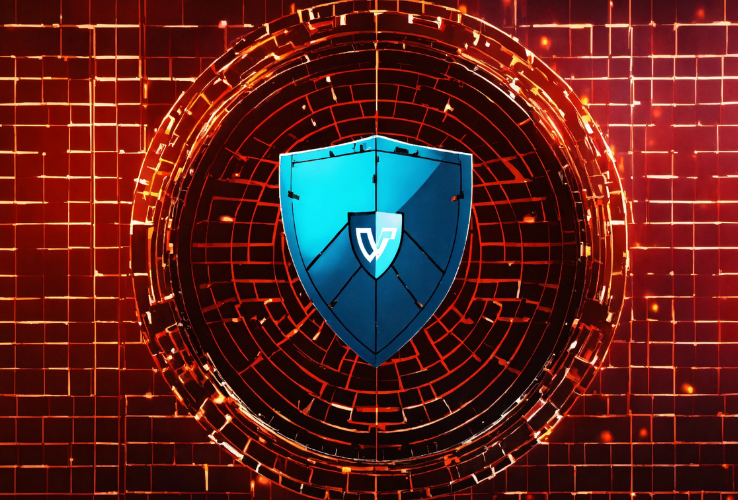Cybersecurity in the Age of Quantum Computing
The dawn of quantum computing promises to revolutionize industries by solving problems that are currently intractable for classical computers. From accelerating drug discovery to optimizing logistics and solving complex equations, the potential applications are staggering. Yet, alongside these opportunities lies a critical challenge: the threat quantum computing poses to modern cybersecurity. The very algorithms that protect sensitive data and power global commerce could be rendered obsolete in a quantum-enabled world.
This dual reality—promise and peril—demands a proactive approach from enterprises. Understanding the risks posed by quantum computing and preparing for a post-quantum era is no longer optional but essential.

The Quantum Threat to Encryption
Modern encryption is the backbone of cybersecurity. Protocols like RSA, ECC (Elliptic Curve Cryptography), and AES (Advanced Encryption Standard) ensure secure communications, protect financial transactions, and safeguard sensitive information. These encryption methods rely on mathematical problems that classical computers cannot solve efficiently, such as factoring large numbers or computing discrete logarithms.
Quantum computers, however, operate on fundamentally different principles. Leveraging qubits and phenomena like superposition and entanglement, they can perform certain calculations exponentially faster than classical machines. This capability has profound implications for encryption:
- Breaking Asymmetric Cryptography: Algorithms like RSA and ECC, widely used in digital signatures and secure key exchanges, are particularly vulnerable. Quantum computers equipped with Shor’s algorithm could factorize large numbers or compute discrete logarithms, rendering these encryption methods insecure.
- Weakening Symmetric Cryptography: While symmetric encryption (e.g., AES) is more resilient, Grover’s algorithm allows quantum computers to significantly reduce the time required to perform brute-force attacks. Doubling key sizes can mitigate this risk, but it highlights the need for quantum-resistant alternatives.
- Compromising Data-in-Waiting: A growing concern is “harvest now, decrypt later” attacks. Cybercriminals may steal encrypted data today, anticipating the ability to decrypt it once quantum computers become powerful enough. This poses a severe threat to sensitive information with long-term value, such as intellectual property, personal data, or government secrets.
The Need for Quantum-Resistant Cryptography
Quantum-resistant cryptography, also known as post-quantum cryptography (PQC), is the foundation of cybersecurity in the quantum era. These algorithms are designed to resist both classical and quantum attacks, ensuring long-term data security.
Several promising post-quantum cryptographic algorithms are under development, including lattice-based, code-based, and hash-based approaches. Organizations like the National Institute of Standards and Technology (NIST) are leading efforts to standardize these algorithms, with finalists expected to shape the future of secure communications.
How Enterprises Can Prepare for the Quantum Era
Transitioning to quantum-resistant cryptography is a complex, multi-step process. Enterprises need to take proactive measures to ensure their cybersecurity frameworks remain robust in the face of emerging quantum threats.
1. Understand the Quantum Timeline
While large-scale, fault-tolerant quantum computers capable of breaking encryption are not yet available, progress in quantum computing is accelerating. Experts estimate that such systems could emerge within the next 10 to 20 years. Organizations must act now to prepare for this inevitability.
2. Conduct a Cryptographic Inventory
The first step is to map out where and how encryption is used across the enterprise. This includes identifying critical systems, applications, and data protected by vulnerable algorithms like RSA or ECC. Understanding the scope of exposure is essential for prioritizing mitigation efforts.
3. Adopt a Hybrid Approach
Transitioning to quantum-resistant cryptography will not happen overnight. A hybrid approach, where classical and quantum-resistant algorithms coexist, can provide a gradual path to quantum security. This allows organizations to test and validate new solutions without disrupting existing operations.
4. Collaborate and Align with Standards
Organizations should actively engage with industry bodies and follow the progress of post-quantum cryptographic standards. Adopting NIST-approved algorithms as they become available will ensure compliance and interoperability.
5. Invest in Cyber Resilience
Quantum computing is just one facet of an evolving threat landscape. Strengthening overall cyber resilience—through measures like robust incident response plans, continuous monitoring, and employee training—will enhance an organization’s ability to adapt to new challenges.
6. Monitor Quantum Advancements
Quantum technology is rapidly evolving, and staying informed about breakthroughs is crucial. Collaboration with academic institutions, government agencies, and technology providers can help enterprises stay ahead of the curve.

Quantum-Safe Solutions in Practice
Several industries are already exploring quantum-safe solutions to protect their operations:
- Financial Services: Banks and payment processors are piloting quantum-resistant algorithms to secure transactions and prevent data theft.
- Telecommunications: Companies like BT and Deutsche Telekom are testing quantum key distribution (QKD) to enable secure communications over fiber networks.
- Government and Defense: Governments are prioritizing quantum security for critical infrastructure, classified communications, and long-term data protection.
Challenges in the Transition to Quantum-Resistant Cryptography
Despite its importance, adopting quantum-resistant cryptography presents several challenges:
- Complexity: Integrating new cryptographic algorithms into existing systems requires significant effort, especially for large enterprises with diverse IT landscapes.
- Performance Trade-offs: Post-quantum algorithms often require more computational resources, which can impact system performance and scalability.
- Uncertainty: The evolving nature of quantum computing and cryptographic standards means that enterprises must navigate a landscape of incomplete information.
The Future of Cybersecurity in a Quantum World
The rise of quantum computing is a transformative moment for cybersecurity. While the challenges are significant, so too are the opportunities. By embracing quantum-resistant cryptography and fostering a culture of proactive adaptation, enterprises can not only mitigate risks but also position themselves as leaders in secure digital innovation.
As the timeline to quantum supremacy shortens, organizations must act decisively to ensure their systems and data remain protected. The transition to quantum-safe security is not just a technological upgrade—it is a fundamental rethinking of how trust, privacy, and security are maintained in an interconnected world.
Conclusion: A Call to Action
Quantum computing is no longer a distant possibility—it is a looming reality. For enterprises, the time to prepare is now. By understanding the quantum threat, investing in post-quantum cryptography, and adopting a proactive approach to cybersecurity, organizations can safeguard their future in an era defined by quantum advancements. The journey may be complex, but the cost of inaction is far greater.
